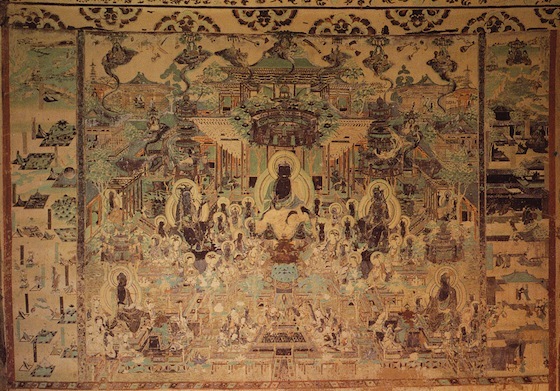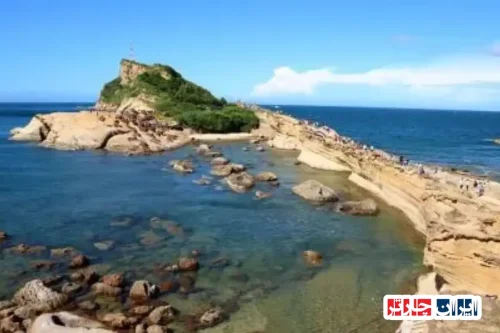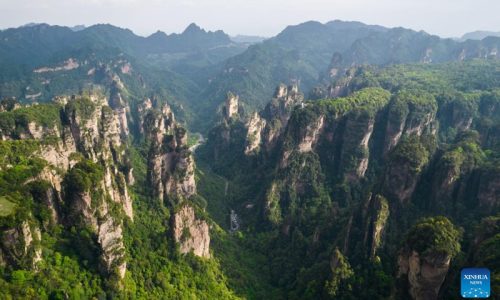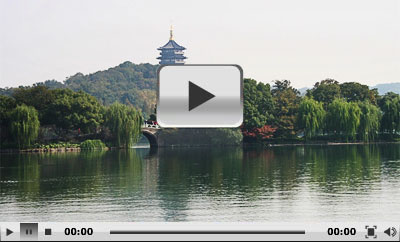Discover the Magnificent Mogao Caves in Gansu Province China: A Treasure of Ancient Art and Culture
Exploring the Mogao Caves-Iran Charter in Gansu Province, China, offers a unique journey into one of the world’s most significant archaeological and cultural sites. These caves, renowned for their exquisite Buddhist art, intricate murals, and historical significance, attract millions of visitors and researchers annually. The Mogao Caves, also known as the Thousand Buddha Grottoes, are located near the ancient city of Dunhuang and serve as a testament to the rich cultural exchanges along the historic Silk Road. Their vast complex encompasses over 700 caves, each adorned with centuries-old paintings, sculptures, and manuscripts that narrate stories of spiritual devotion, artistic innovation, and intercultural dialogue. The site’s strategic location facilitated the blending of Chinese, Indian, Persian, and Central Asian artistic styles, making it a living museum of ancient civilizations. Modern preservation efforts, utilizing cutting-edge technology like digital imaging and 3D modeling, ensure that this invaluable heritage remains intact for future generations. Visiting the Mogao Caves in Gansu Province provides not only a glimpse into ancient religious practices but also an appreciation of the enduring human pursuit of artistic expression and cultural understanding. Recognizing their global importance, international collaborations continue to support conservation and research initiatives, safeguarding this extraordinary monument of human history.

Introduction to the Mogao Caves in Gansu Province, China: An Ancient Treasure of the Silk Road
The Mogao Caves in Gansu Province, China, stand as a testament to over a thousand years of religious, artistic, and cultural history. Located near Dunhuang, these caves have served as a spiritual hub and a vital point along the historic Silk Road. Their significance extends beyond their religious purpose, representing a unique fusion of art, architecture, and cultural exchange that has influenced civilizations for centuries. Exploring the Mogao Caves offers insight into ancient Chinese civilization, Buddhist art, and the interconnectedness of Eurasian cultures.
The Rich History and Discovery of the Mogao Caves in Gansu Province, China
The history of the Mogao Caves dates back to the 4th century AD, initially constructed as meditation and worship sites for Buddhist monks. Over centuries, they expanded into a vast complex containing thousands of murals, sculptures, and manuscripts. Their discovery in the early 20th century by explorers and archaeologists revealed invaluable artifacts that shed light on ancient religious practices and cultural exchanges. Modern archaeological techniques and digital imaging continue to uncover new aspects of this historic site, ensuring its preservation for future generations.
Architectural Marvels and Artistic Masterpieces in the Mogao Caves of Gansu Province, China
The architecture of the Mogao Caves exemplifies sophisticated craftsmanship, featuring intricate carvings, painted ceilings, and elaborate statues. The blending of Chinese, Indian, and Central Asian artistic styles creates a distinctive aesthetic that reflects centuries of cultural interaction. The murals depict Buddhist stories, deities, and everyday life, showcasing a range of artistic techniques from delicate brushwork to vibrant color schemes. These masterpieces not only serve religious purposes but also stand as a testament to the artistic ingenuity of ancient artisans.
Deciphering the Symbolism and Stories Behind the Murals of the Mogao Caves in Gansu Province, China
The murals within the Mogao Caves are rich with symbolic imagery and storytelling, conveying spiritual teachings and mythological narratives. Interpreting these artworks requires understanding the religious symbolism, iconography, and cultural context of the period. Many murals depict the life of Buddha, enlightenment scenes, and moral lessons, often encoded in complex visual language. Modern research and digital analysis help decode these stories, revealing the deep spiritual and cultural messages embedded in the art.
Significant Caves and Their Unique Contributions in Gansu Province, China
Among the numerous caves, certain sites stand out for their historical and artistic importance. The Library Cave, discovered in 1900, contained thousands of ancient manuscripts, offering invaluable insights into Buddhist texts and Silk Road history. Other notable caves feature monumental murals and sculptures that exemplify different artistic styles and religious themes. Each significant cave contributes uniquely to our understanding of the cultural exchanges along the Silk Road and the development of Buddhist art in China.
The Hidden Treasures: Manuscripts, Artifacts, and Documents in the Mogao Caves of Gansu Province, China
The Mogao Caves house a vast collection of manuscripts, paintings, and relics that span over a millennium. These artifacts include religious scriptures, historical records, and artistic works that illustrate the evolution of Buddhism and cultural interactions across Eurasia. Many documents are written in multiple languages, reflecting the diverse influences along the Silk Road. Preservation efforts utilizing modern digital technology ensure these treasures remain accessible and protected for scholarly research and public appreciation.
The Role of the Mogao Caves in Cultural and Commercial Exchanges along the Silk Road in Gansu Province, China
The Mogao Caves served as a vital cultural and commercial nexus during the height of the Silk Road. They facilitated the exchange of religious ideas, artistic styles, and goods between East and West. The murals and inscriptions depict interactions with Central Asian, Indian, Persian, and Middle Eastern cultures, illustrating a vibrant cross-cultural dialogue. This exchange helped shape the development of art, religion, and trade, making the Mogao Caves a symbol of Eurasian interconnectedness and mutual influence.
Conservation Challenges and Modern Preservation Techniques in the Mogao Caves of Gansu Province, China
Preserving the Mogao Caves presents ongoing challenges due to natural deterioration, environmental factors, and tourism impact. Relying on advanced conservation technologies such as digital imaging, climate control systems, and non-invasive restoration methods helps mitigate damage. International collaboration and continuous monitoring are essential to maintain the integrity of these priceless cultural assets. Efforts focus on balancing public access with preservation to ensure that future generations can experience this extraordinary heritage.
Innovative Digital and Scientific Research in the Mogao Caves of Gansu Province, China
Recent advancements in digital technology, including 3D scanning, virtual reality, and multispectral imaging, have revolutionized the study and preservation of the Mogao Caves. These tools enable detailed documentation, virtual restoration, and remote access for global audiences. Scientific research also involves analyzing materials, pigments, and structural stability to inform conservation strategies. Such innovations ensure that the rich history and artistry of the Mogao Caves are safeguarded and accessible for education, research, and cultural dissemination worldwide.

Frequently Asked Questions about the Mogao Caves in Gansu Province, China
- What are the Mogao Caves?
- The Mogao Caves are a complex of Buddhist cave temples located near Dunhuang in Gansu Province, China. They contain thousands of murals, sculptures, and manuscripts that reflect over a millennium of religious, artistic, and cultural history along the Silk Road.
- When were the Mogao Caves built?
- The construction of the Mogao Caves began in the 4th century AD and continued for over a thousand years, reaching their peak during the Tang Dynasty (618–907 AD).
- What is the significance of the Mogao Caves?
- The caves serve as a vital historical record of Buddhist art, religious practices, and cultural exchanges along the Silk Road, showcasing a blend of Chinese, Indian, Central Asian, and Middle Eastern influences.
- What kind of artworks are found inside the Mogao Caves?
- The caves feature intricate murals, statues, and manuscripts. The murals depict Buddhist stories, deities, and daily life scenes, created using various artistic techniques and vibrant colors.
- What is the Library Cave?
- The Library Cave, discovered in 1900, contained thousands of ancient manuscripts and texts, providing invaluable insights into Buddhist scriptures and Silk Road history.
- How are the murals and sculptures preserved?
- Modern preservation techniques such as digital imaging, climate control, and non-invasive restoration methods are used to protect and conserve the artworks for future generations.
- What role did the Mogao Caves play in Silk Road trade?
- The caves were a hub for cultural and religious exchange, facilitating interactions between East and West, and showcasing influences from various civilizations through art and inscriptions.
- Are the Mogao Caves open to the public?
- Yes, the caves are open to visitors, but access is carefully managed to ensure preservation. Some areas may have restrictions or require guided tours.
- What modern technologies are used in studying the Mogao Caves?
- Advanced techniques like 3D scanning, multispectral imaging, and virtual reality are employed to document, analyze, and digitally restore the caves and their artworks.
- What are the main challenges in preserving the Mogao Caves?
- Natural deterioration, environmental factors, and tourism impact pose ongoing challenges. Conservation efforts focus on balancing accessibility with protection using modern technology.
- How do digital tools help in the preservation of the caves?
- Digital imaging and 3D modeling allow detailed documentation, virtual restoration, and remote access, helping to preserve the site’s integrity and share its beauty globally.
- What is the significance of the murals’ symbolism?
- The murals encode spiritual teachings, mythological stories, and moral lessons through complex iconography, which modern research helps decode for better understanding.
- How do the caves reflect cultural exchange along the Silk Road?
- The artworks and manuscripts show influences from India, Persia, Central Asia, and the Middle East, illustrating a vibrant cross-cultural dialogue that shaped Buddhist art and religion.
- What future prospects are there for the Mogao Caves?
- Ongoing research, technological advancements, and international collaboration aim to enhance preservation, expand accessibility, and deepen understanding of this UNESCO World Heritage site.
- Why is the Mogao Caves considered an important cultural heritage?
- They are a priceless repository of religious, artistic, and historical artifacts that exemplify the rich cultural exchanges along the Silk Road and influence global heritage.

























